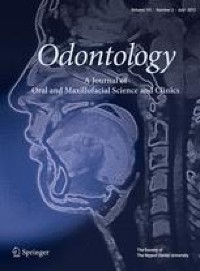Abstract
The aim of this study was to determine whether histone deacetylase inhibitors (HDACi), including entinostat (MS-275), valproic acid (VPA), trichostatin A (TSA), and sodium butyrate (NaB), promoted the odontogenic differentiation of the odontoblast-like cell line, MDPC-23 in the absence of an osteoblast mineralization medium. The cells were cultured in basal medium (Dulbecco's modified Eagle medium) with and without (controls) the inhibitors. The cell viability and migration were assessed using the cell proliferation reagent WST-1 and a scratch wound healing assay, respectively. The mRNA expression levels of bone morphogenetic protein (Bmp)-2 and -4, collagen 1 alpha 1 (Col1α1), osteocalcin (Oc), dentin matrix protein 1 (Dmp1), dentin sialophosphoprotein (Dspp), runt-related transcription factor 2 (Runx2), Krueppel-like factor 5 (Klf5), and Msh homeobox 1 (Msx1) were evaluated by quantitative real-time polymerase chain reaction (qRT-PCR). Alizarin red and alkaline phosphatase assays were performed to determine the extent of mineralization in the culture systems. No significant differences in cell numbers were observed between the controls and the MS-275-, VPA-, and NaB-treated cells; however, a significant difference was observed with TSA (concentration, 1000 nM). The scratch wound healing assay showed no effect of cell migration in the MS-275 (1.0 µM)-treated cells when compared with the controls at 24 h. Furthermore, MS-275, VPA, and NaB increased the mRNA expression levels of Bmp-2 and -4, Oc, and Runx2 followed by the mineralization of the cells. Only MS-275 significantly increased the expression levels of Dmp1, Dspp, Klf5, and Msx1 in the cells. These findings indicated that MS-275 may be considered as a reliable candidate for the odontogenic differ entiation of dental pulp cells.



Δεν υπάρχουν σχόλια:
Δημοσίευση σχολίου